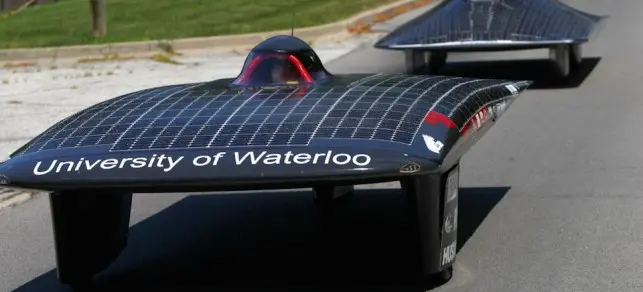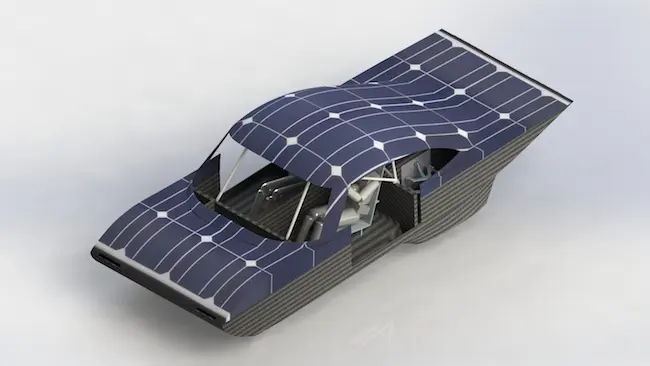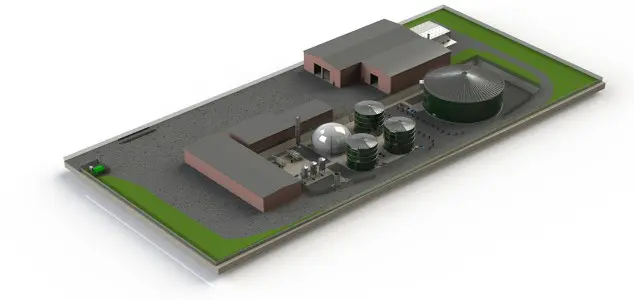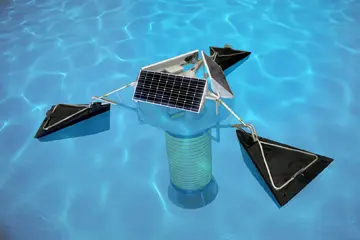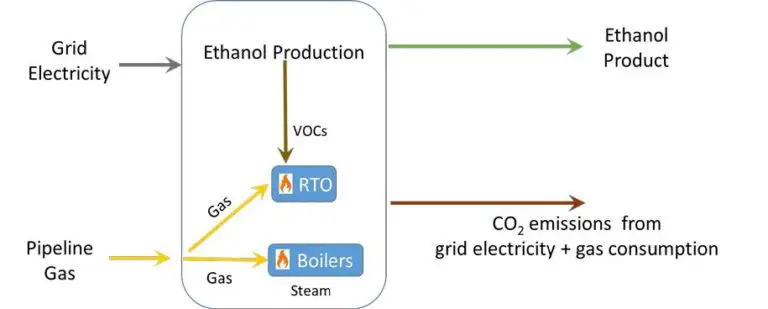THE CUTTING EDGE IN SOLAR CARS is a vehicle that looks like something your dad might drive every day on his way to the paperwork bureaucracy factory.
In the early days solar cars stretched the definition of the term. They were more like flying saucers than earth-bound vehicles. Drivers lay down to steer, operating the pedals with their hands.
But solar is growing up. And now the cars look a lot more like, well, cars. The Midnight Sun Rayce Car Team from the University of Waterloo is currently building one of the first Cruiser-Class solar vehicles in Canada. Like its ten predecessors, the MS XI will compete in international competitions against the fastest, strongest, meanest solar vehicles from around the world. The difference is that this car, in the new Cruiser-Class competition category, will also be judged on style. She’s gotta look good, too.
Not that the challenges end there. Jonathan Tang of the Midnight Sun business team explains that the relative success of solar energy has raised the bar in several areas.
“Before, we could go up to companies and ask them for money. Now we need to be more selective and be more professional; companies are less willing to give money. We need to be able to offer them something as well.”
What Midnight Sun is offering is a vehicle that imitates conventional cars while showing off its own “sleek” attributes. As part of the push toward mainstream respectability, the MS XI has been designed with practicality and conventional aesthetics in mind. Despite years of experience in pushing the solar envelope, a conventional-looking car is still a major leap for a team whose resume includes several top-three finishes in international competition and one briefly-held world record for longest single journey. To underscore the challenge, the car has now undergone three major re-designs as the Midnight Sun team prepares to transition into the build phase.
Meanwhile, Jonathan is working to raise a hefty $250,000 to complete the MS XI’s production, with its first races penciled in for early 2015. With $113,000 procured to date, the team is well on its way. No doubt the next frontier will be a price tag a little closer to the familiar range for high-end vehicles.
Solar has come so far that the benchmark has shifted from “it moves” to “it looks and runs like a car.”
Cruiser-Class competitions are rapidly gaining in international popularity. The World Solar Challenge website explains that, “This goal of the Michelin Cruiser Class is not speed but practicality, with the ultimate goal of an entrant being able to meet the requirements for road registration in the country of origin.”
So solar vehicles are evolving. To stay at the forefront of solar innovation, the Midnight Sun team has developed an intricate internal structure designed to pass down information and design advice from successive generations of the engineering students who work on the cars. Alumni regularly check in with the current team to offer their perspectives and guidance.
In the old days, it was sufficiently impressive to have built a vehicle that could run on energy from the sun. Solar has come so far since then that the benchmark has shifted from “it moves” to “it looks and runs like a car.” There’s no discounting the reality that it’s a difficult challenge, but the fact that we’re setting the standard so high reflects very well on the successful innovation done over the years by groups like Midnight Sun. Mass-produced solar cars may well be visible on the horizon.


